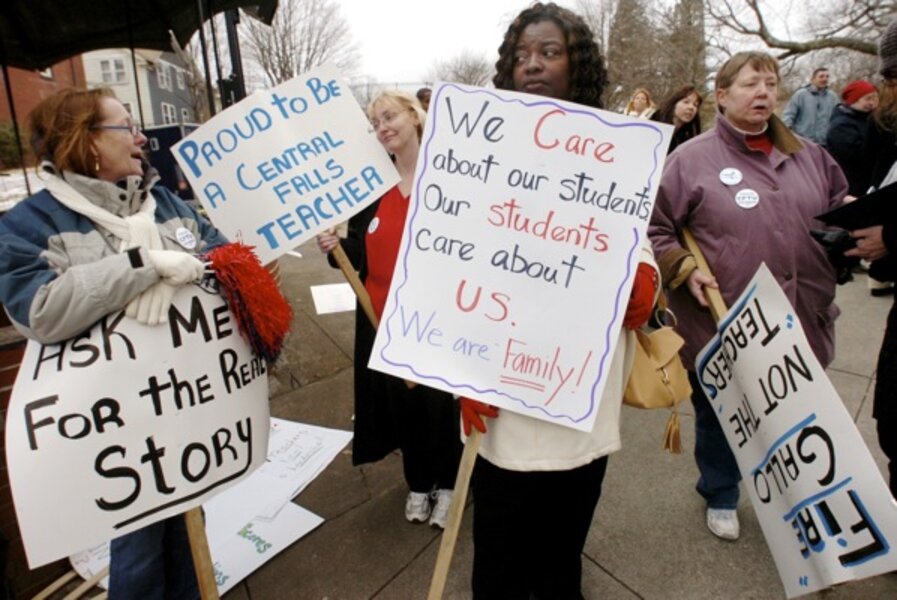To improve school performance, fire all the teachers?
Loading...
When managers want to improve performance of their companies, they sometimes close factories and lay off workers. But they never fire the entire workforce.
Everyone knows that's counterproductive.
So when the school board in Central Falls, R.I., fired all 88 teachers and staff at its high school, the move had little to do with productivity and everything to do with sending a message to teachers' unions: The status quo of poor-performing schools is unacceptable.
The move is part of a national shake-up that US Education Secretary Arne Duncan hopes to engender in public schools. He is forcing states to identify the bottom 5 percent of their schools and take one of four actions with each one: closure; takeover by an independent organization; transformation; or turnaround, which calls for firing all the teachers and rehiring no more than half of them in the fall.
Central Falls' high school was one of six schools Rhode Island identified as poor performers. Test scores are low. Just over half of the students drop out.
The superintendent and teachers tried to reach agreement on transformation, which would have meant working longer hours, among other things, but failed. Then the superintendent opted for turnaround and at a public meeting Tuesday, the board voted to fire all the staff.
It is clear the stakes reach far beyond Rhode Island. Union leaders and teachers held a rally before the meeting. Secretary Duncan applauded the school officials for doing the right thing.
"This is clearly a blunt instrument," says Dan Goldhaber, research professor at the Center on Reinventing Public Education at the University of Washington in Seattle. But "the research is so overwhelming that teacher effectiveness matters and there's a very wide degree of variation in effectiveness in the workforce."
It is possible that this is a watershed moment in US labor history, not unlike the Reagan administration's firing of unionized air-traffic controllers in the early '80s. The reaction has been muted so far because the Obama administration is Democratic, but public-sector unions must be paying close attention to what is happening.
Will the Obama administration really insist that teacher unions quit protecting poor-performing teachers, who are notoriously hard to fire? New York City has spent two years trying to get rid of subpar teachers and has so far managed to fire only three, The New York Times reported Wednesday.
Sometimes, companies will systematically fire some of their worst workers each year – 5 percent or even 10 percent – to light a fire under the remaining employees. It's a process known as "rank and yank" and it can be effective for a few years, but then has diminishing returns according to a 2005 study.
But firing all the workers?
"I'm not sure any CEO would let every worker go and start over again," says Steve Scullen, one of the study's authors and a professor of management at Drake University in Des Moines.
The only time managers do that in the private sector is when they want to play hardball with their unions. It's a message, not a productivity enhancer.





